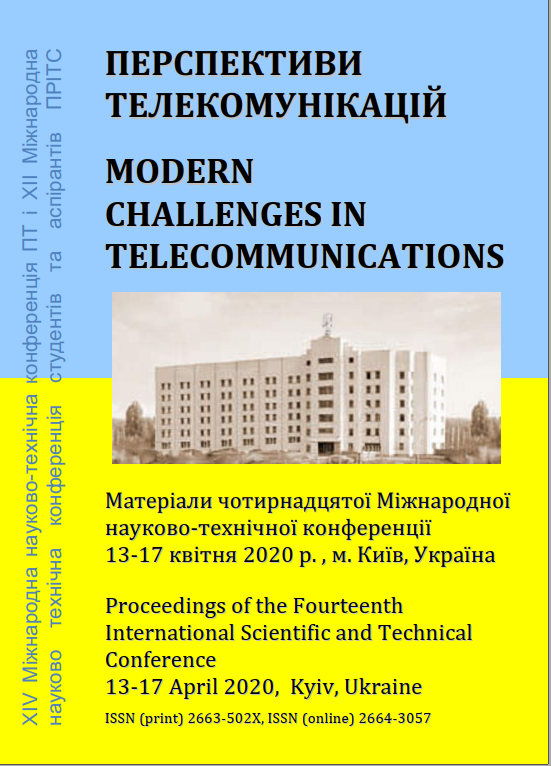УДОСКОНАЛЕНА АРХІТЕКТУРА МЕРЕЖІ ДЛЯ ХМАРНОГО ІНТЕРНЕТУ РЕЧЕЙ
Ключові слова:
Інтернет Речей, Архітектура мережі, Data BankАнотація
В даній статті запропоновано застосування технології Data Bank в хмарній архітектурі ІoT мережі. Дана структура спрямована на захист персональних даних користувачів, дозволяючи їм контролювати який тип даних передається та надає допоміжні інструменти для візуалізації транзакцій та компрометації конфіденційності.
Improved architecture of the cloud-IoT network
This article proposes the use of Data Bank technology in cloud-based IoT architecture. This structure aims to protect the personal data of users, allowing them to control what type of data is being transmitted and provides supportive tools for transaction visualization and privacy compromise.
Посилання
H. Haddadi, H. Howard, A. Chaudhry, J. Crowcroft, A. Madhavapeddy, and R. Mortier. Personal Data: Thinking Inside the Box. ArXiv e-prints, January 2015.
“Access control models for virtual object communication in cloud-enabled IoT,” in IEEE International Conference on Information Reuse and Integration (IRI), 2017, pp. 16–25.
Min Mun, Shuai Hao, Nilesh Mishra, Katie Shilton, Jeff Burke, Deborah Estrin, Mark Hansen, and Ramesh Govindan. Personal data vaults: A locus of control for personal data streams. In Proceedings of the 6th International COnference, Co-NEXT ’10, pages 17:1–17:12, New York, NY, USA, 2010. ACM.
S. Barker, “The next 700 access control models or a unifying meta-model?” in Proceedings of the 14th ACM Symposium on Access Control Models and Technologies, ser. SACMAT ’09. New York, NY, USA: ACM, 2009, pp. 187–196.
##submission.downloads##
Як цитувати
Номер
Розділ
Ліцензія
Авторське право (c) 2020 Євгеній Олександрович Пороло, Василь Васильович Курдеча

Ця робота ліцензується відповідно до Creative Commons Attribution 4.0 International License.
Authors who submit to this conference agree to the following terms:a) Authors retain copyright over their work, while allowing the conference to place this unpublished work under a Creative Commons Attribution License, which allows others to freely access, use, and share the work, with an acknowledgement of the work's authorship and its initial presentation at this conference.
b) Authors are able to waive the terms of the CC license and enter into separate, additional contractual arrangements for the non-exclusive distribution and subsequent publication of this work (e.g., publish a revised version in a journal, post it to an institutional repository or publish it in a book), with an acknowledgement of its initial presentation at this conference.
c) In addition, authors are encouraged to post and share their work online (e.g., in institutional repositories or on their website) at any point before and after the conference.

